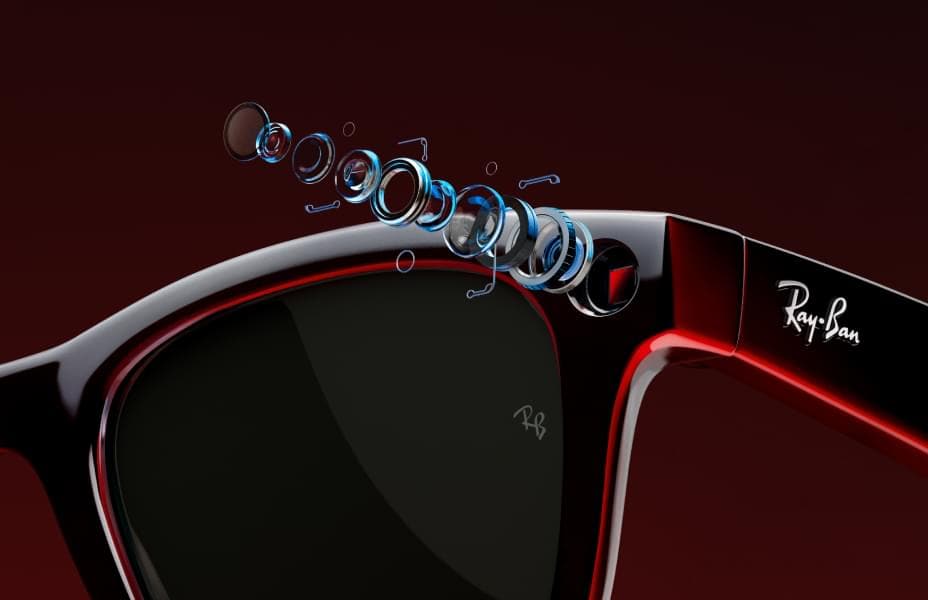Meta’s partnership with Ray-Ban has evolved to something much more than just ordinary smart glasses that take pictures. The new Ray-Ban Meta spectacles being promoted in an aggressive manner are designed as “wearable” AI equipment that can communicate and understand the environment of the user in an immediate manner. This skyward expansion of the device’s scope, especially the data policy alterations, is a factor raising anxiety in the most optimistic users that possibly the good-looking glasses are someday to be teeming with a double life of a surveillance apparatus.
The AI Revolution in Your Eyewear
These glasses are powered by Meta AI, a multimodal system that features the 12MP camera and the five-mic array so you can see and hear through the points of view of the glasses by saying the simple words “Hey Meta.” The features promoted are genuinely revolutionary and futuristic:
- Visual Understanding: Meta AI can tell you about the landmarks, objects, animals, or plants that you see and even provide more details when you ask. (e.g., “Hey Meta, what building is this?” or “Hey Meta, look and tell me what type of tree this is.”)
- Real-Time Translation: The glasses will interpret dialogues between speakers in the supported languages (currently available for English, Spanish, French, and Italian) in real time. The translations can be played to the user through the speakers. In addition, they can also convert visual texts that the camera captures.

- Contextual Assistance: Bring up suggestions based on local points of interest, create unique captions for images, or request an explanation of the events that are still in front of me. The latter would be acquainted with the concept of proactive recommendation systems in electronic commerce in light of the current excitement in information technology and the latest developments in online shopping through the exploitation of video sources and related reviews.
- Hands-Free Features: The device does not only allow its user to take pictures and make recordings but also to have calls, send messages (SMS, WhatsApp, Messenger), manage music (e.g., play, stop, go to the next track), set reminders (which might even be visual ones like hotel room numbers), scan QR codes, and ask about and get the latest up-to-date news on the stock markets or sporting events verbally.
- Users have an option to send the contents directly to Meta platforms such as Instagram and Facebook, and their video talks can switch between the phone and the glasses’ first-person camera.
The proliferation of the default storage settings combined with a major shift in policy that took place sometime in the late April/early May 2025 timeframe has made the problem of privacy conspicuous. Data handling has changed; for example, a voice record of the user ((5)) is one of the concerns.
- Mandatory Voice Recording Storage: Users’ voice recordings are now stored by default when they carry out a conversation with the glasses using “Hey Meta.” The most significant problem is that the option for the users to uncheck* this storage in the first place has been eliminated. Although the users can still delete these recordings manually through the Meta AI (formerly Meta View) app settings, the recording is collected without the need for any user action in an automated way. This information, whose life span may be until a year when the organization disclosed it has been used for AI systems and other products, in fact, is only the potential for it to be used. Some of it will get used.
- AI Camera Use Enabled by Default: When the “Hey Meta” wake word functionality is enabled, the feature called “Meta AI with camera use” is enabled at the same time. The AI can be used for video processing whenever required by voice. It has been explained that the policy is that visual data (photos/videos) is first processed locally on the tethered phone before the user sends the data to the Meta AI cloud system, uses cloud-demanding features, or uploads it to Meta platforms. However, the default enablement can create the impression that the voice assistant is constantly connecting the camera.

These alterations could be less beneficial for the users, who will be more vulnerable to the AI training programs that use the glasses as data collection tools of a higher level if not completely autonomous. The root of the issue is the voice recordings storage without the possibility of turning it off, which is a radical change in the way we think about privacy in society as it becomes something that is done by default and can only be undone with the help of a person.
How can users manage the situation?
Among other tools, the firm is underlining the fact that users are given the command through the following options:
- Recording Indicator LED: Whenever the camera is capturing photos or videos, a visible LED light will appear on the frame, aiming at warning people around. According to the instructions, users will be informed if the LED is covered.
- Disabling “Hey Meta”: The option to turn off “Hey Meta,” canceling the voice command, has been made available to the users. In this way, the user cannot participate in the hands-free AI features through voice and the camera, but the core AI hands-free features of the gadget, which are the distinguishable ones, will not be available either.
- Manual Deletion: In the Meta AI app, users will first check and then confirm the deletion of their stored voice interactions.
The Bigger Picture: Wearable AI and Societal Norms
The development of Ray-Ban Meta smart glasses constitutes an element of tech evolution and the privacy rights we need to preserve at the core. The vision of smart glasses equipped with AI being used on a wide scale might provoke serious social issues:
- Consent in Public Places: What is the procedure for securing consent of people who are in the public domain but are not aware that they could be the object of a recording or AI could make their recognition?
- Data Security: How secure is the collected voice and potentially visual data, and what are the risks of breaches or misuse?
- Algorithmic Bias: Can a set of the data trained to the AI include the biases present in the collected interactions?
Convenience versus What Else?
Meta’s way of turning a simple wearable device into the next level by creating AI-based Ray-Ban glasses is truly an example of the company’s commitment to wearable tech. They foresee that the glasses would be powerful with more advanced assistance from AI.
Furthermore, the push to have voice data always on and the AI camera always in engaging mode is a worrying trend for privacy rooters. This change of mind not to ask the user’s consent before recording the voice brings users to a dilemma of being tracked. In addition, while there are many ways to protect the data, most solutions are user-dependent and need users either to clean their data after presentation as well as to deactivate the provided features that led to the data collection in the first place or not to require users’ consent in a positive way.


Thank you, your article surprised me, there is such an excellent point of view. Thank you for sharing, I learned a lot.